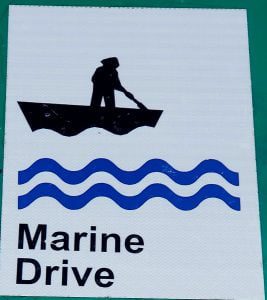Hit the Road: 10 Scenic Drives in Nova Scotia That Will Leave You Breathless
Hey there Adventurer, just wanted to let you know that some of the links on this site may be Amazon Affiliate or affiliate links, . which means I may earn a small commission if you make a purchase after clicking on them. But don't worry, it won't cost you any extra – in fact, sometimes you may even get a special discount! So if you do decide to buy something through my links, know that you'll be supporting my work and helping me bring more helpful content your way.Thank you for your support, you're like a superhero to my work! I couldn't do it without you, unless I suddenly develop the ability to clone myself...which, honestly, would be pretty cool.
Did you know Nova Scotia boasts over 13,000 km of stunning coastline? In this post, you will discover the best scenic drives in Nova Scotia to soak up the seaside splendour!
Nova Scotia is a beautiful province that is home to some of the most breathtaking scenic drives in the world. From the rugged coastlines of the Cabot Trail to the historic towns along the Evangeline Trail, there is something for everyone to explore. In this post, I will introduce you to all of Nova Scotia’s must-see scenic drives:
- Bras d’Or Lakes
- Cabot Trail
- Ceilidh Trail
- Evangeline Trail
- Fleur-de-Lis Trail/Marconi Trail
- Glooscap Trail
- Halifax & Dartmouth
- Lighthouse Route
- Marine Drive
- Sunrise Trail
Whether you’re looking for stunning ocean views, charming fishing villages, or vibrant cultural experiences, these scenic drives have it all. So buckle up and get ready to discover the natural beauty and rich history of Nova Scotia on these unforgettable road trips!
1. Bras d’Or Lakes Scenic Drive
The Bras d’Or Lakes Scenic Drive is a 300-kilometre route that winds its way around the beautiful Bras d’Or Lakes on Cape Breton Island, Nova Scotia. The drive offers breathtaking views of the lakes, as well as the rolling hills and forests of the island.
One of the highlights of the Bras d’Or Lakes Scenic Drive is the Bras d’Or Lake itself, which is a saltwater lake surrounded by picturesque fishing villages and small towns. Visitors can take a boat tour of the lake, go kayaking or fishing, or simply relax and take in the stunning views.
Other scenic highlights of the route include the beautiful Margaree River Valley, the charming town of Baddeck, and the Cape Breton Highlands National Park, which offers some of the most spectacular scenery in the province.
To make the most of the Bras d’Or Lakes Scenic Drive, it’s best to visit between June and September when the weather is warm and sunny. It’s also important to plan for frequent stops along the way to take in the enchanting scenery and explore the local communities. Some recommended stops include the Alexander Graham Bell National Historic Site, the Gaelic College in St. Ann’s, and the Inverary Resort in Baddeck.
When it comes to food and lodging, visitors can enjoy fresh seafood and local cuisine at restaurants such as the Bite House and the Red Barn Restaurant. There are also plenty of accommodation options along the route, including cozy bed and breakfasts and lakeside cottages.
2. Cabot Trail
The Cabot Trail is a 298-kilometre scenic drive located on Cape Breton Island, known for its spectacular views of the Atlantic Ocean, rugged coastline, and lush forests. The highlight of the trail is undoubtedly the Cape Breton Highlands National Park, which covers a large portion of the island’s interior and offers visitors an array of outdoor activities such as hiking, camping, and wildlife watching.
Along the trail, visitors can also explore charming coastal villages such as Chéticamp and Ingonish, where they can experience the region’s vibrant Acadian and Scottish cultures through local music, cuisine, and festivals. The trail also passes through the Margaree Valley, which is renowned for its fly-fishing opportunities and scenic beauty.
For those planning to drive the Cabot Trail, it’s best to visit between May and October when the weather is mild and the roads are clear. It’s also important to plan for frequent stops along the way to take in the stunning scenery and explore the local communities. Some recommended stops include the Skyline Trail, the Chéticamp Visitor Centre, and the Ingonish Beach.
When it comes to food and lodging, there are plenty of options along the trail ranging from cozy bed and breakfasts to upscale resorts. Visitors can also enjoy fresh seafood and traditional Acadian dishes at local restaurants such as Le Gabriel Restaurant and Lounge or The Dancing Moose Café.

3. Ceilidh Trail
The Ceilidh Trail is a scenic route that winds its way through the western part of Cape Breton Island, Nova Scotia. The trail runs along the coast and offers stunning views of the Gulf of St. Lawrence and the rugged coastline.
One of the highlights of the Ceilidh Trail is the beautiful Inverness Beach, which is known for its golden sand and crystal-clear water. Visitors can also explore the charming town of Inverness, which has a thriving arts and culture scene.
Other scenic highlights of the route include the breathtaking views from the Cape Mabou Highlands, the beautiful Margaree River Valley, and the vibrant Celtic music scene in the town of Judique.
To make the most of the Ceilidh Trail, it’s best to visit between June and September when the weather is warm and sunny. It’s also important to plan for frequent stops along the way to take in the stunning scenery and explore the local communities. Some recommended stops include the Inverness County Centre for the Arts, the Glenora Inn & Distillery, and the Celtic Music Interpretive Centre.
When it comes to food and lodging, visitors can enjoy fresh seafood and local cuisine at restaurants such as the Cabot Public House and the Clove Hitch Bar & Bistro. There are also plenty of accommodation options along the route, including cozy bed and breakfasts and beachfront cottages.
4. Evangeline Trail

The Evangeline Trail is a scenic drive that runs along the Bay of Fundy in Nova Scotia, named after the heroine of Longfellow’s epic poem, Evangeline. The route spans over 400 kilometres and is rich in history and natural beauty, with highlights including the Grand Pré National Historic Site and the charming town of Annapolis Royal.
The Grand Pré National Historic Site, a UNESCO World Heritage Site, is a must-visit stop along the trail. It commemorates the Acadian deportation and celebrates the region’s unique culture and traditions. Visitors can explore the site’s museums, gardens, and historic buildings, including the Acadian church and the statue of Evangeline.
Annapolis Royal, another popular stop along the trail, is a picturesque town known for its rich history and vibrant arts community. Visitors can stroll along the historic waterfront, visit the Fort Anne National Historic Site, or take in a performance at the King’s Theatre.
To enjoy the Evangeline Trail to the fullest, it’s best to visit between June and September when the weather is mild and the tourist season is in full swing. It’s also important to plan for frequent stops along the way to take in the stunning scenery and explore the local communities. Some recommended stops include the Tangled Garden, the Port Royal National Historic Site, and the Acadian Museum of Pubnico.
When it comes to food and lodging, visitors can enjoy fresh seafood and local cuisine at restaurants such as Ye Olde Argyler Lodge and Wild Caraway. There are also plenty of accommodation options along the route, including cozy bed and breakfasts and charming inns.

5. Fleur de Lis Trail/Marconi Trail
The Fleur de Lis Trail and the Marconi Trail are two scenic routes that wind their way through Cape Breton Island, Nova Scotia. The Fleur de Lis Trail runs along the eastern shore of Cape Breton, while the Marconi Trail follows the western coast.
The Fleur de Lis Trail is known for its stunning coastal scenery, charming fishing villages, and historic landmarks such as the Fortress of Louisbourg. The route also offers opportunities for hiking, beachcombing, and wildlife watching.
Meanwhile, the Marconi Trail is named after the famous inventor Guglielmo Marconi, who conducted some of his first experiments in wireless communication from Cape Breton Island. The trail offers stunning views of the Gulf of St. Lawrence and the rugged coastline, as well as access to some of the island’s most beautiful beaches and hiking trails.
To make the most of these scenic routes, it’s best to visit between June and September when the weather is warm and sunny. Visitors should plan for frequent stops along the way to take in the stunning scenery and explore the local communities. Some recommended stops on the Fleur de Lis Trail include the Louisbourg Lighthouse, the Glace Bay Heritage Museum, and the beautiful beach at Dominion.
On the Marconi Trail, visitors can enjoy breathtaking views from the Cabot Trail Lookoff, explore the Cape Breton Highlands National Park, and visit the Alexander Graham Bell National Historic Site. There are also plenty of opportunities for hiking, fishing, and wildlife watching.
When it comes to food and lodging, visitors can enjoy fresh seafood and local cuisine at restaurants such as the Lobster Pound and Moore’s Famous Fish & Chips. There are also plenty of accommodation options along the routes, including cozy bed and breakfasts and beachfront cottages.
6. Glooscap Trail

The Glooscap Trail is a scenic drive that winds its way along Nova Scotia’s Bay of Fundy, starting in Amherst winding along the Bay of Fundy through Truro and ending in Windsor. The route takes its name from Glooscap, a legendary figure from Mi’kmaq mythology who is said to have created the Bay of Fundy with his great powers.
The Glooscap Trail is known for its stunning coastal scenery, including towering cliffs, rocky shorelines, and picturesque fishing villages. Highlights of the route include the Five Islands Provincial Park, where visitors can explore the world-famous sea caves and enjoy spectacular views of the Bay of Fundy, and the Burntcoat Head Park, home to the highest tides in the world.
Other must-see stops on the Glooscap Trail include the historic town of Parrsboro, where visitors can learn about the area’s rich history and culture at the Parrsboro Shore Historical Society Museum, and the Joggins Fossil Cliffs, a UNESCO World Heritage Site that offers a glimpse into the area’s prehistoric past.
To make the most of the Glooscap Trail, it’s best to visit between May and October when the weather is mild and the scenery is at its most beautiful. Visitors should plan for frequent stops along the way to take in the stunning views and explore the local communities.
When it comes to food and lodging, visitors can enjoy fresh seafood and local cuisine at restaurants such as the Wild Caraway Restaurant & Cafe and the Fundy Restaurant. There are also plenty of accommodation options along the route, including cozy bed and breakfasts and waterfront cottages.

7. Halifax & Dartmouth
The Halifax-Dartmouth Scenic Route is a 40 km route that crosses the harbour via the Macdonald Bridge and Circumferential Highway. It offers some of the best views of the city’s skyline and waterfront, making it a popular route for tourists and locals alike.
One of the highlights of the route is the Halifax Waterfront, which boasts a wide array of shops, restaurants, and cultural attractions. Visitors can take a stroll along the boardwalk, explore the Maritime Museum of the Atlantic, or visit the Halifax Seaport Farmers’ Market, which is the oldest continuously operating farmers’ market in North America.
Another must-see attraction on the route is Point Pleasant Park, a 75-hectare (190-acre) park that offers a peaceful escape from the hustle and bustle of the city. The park is home to several walking trails, picnic areas, and historic monuments, including the Prince of Wales Tower National Historic Site.
Finally, Fisherman’s Cove, located in Eastern Passage, is a quaint fishing village that offers a glimpse into Nova Scotia’s maritime heritage. Visitors can explore the many shops, galleries, and restaurants, and take a boat tour of the harbour.
As for tips, it’s recommended to drive the route in the summer when the weather is pleasant and the days are long. Parking can be limited in some areas, so it’s advisable to arrive early or take public transportation if possible. Additionally, be sure to try some fresh seafood at one of the many restaurants along the way, and don’t forget to bring your camera to capture the stunning views.

8. Lighthouse Route

The Lighthouse Route is a picturesque 300-kilometre drive along Nova Scotia’s South Shore, featuring stunning coastal scenery, charming fishing villages, and historic lighthouses. The highlight of the route is undoubtedly Peggy’s Cove, home to one of the most iconic lighthouses in Canada and a popular spot for photographers and sightseers.
Other scenic highlights along the Lighthouse Route include the charming town of Lunenburg, a UNESCO World Heritage Site famous for its colourful wooden houses and maritime heritage, and the beaches of Mahone Bay, where visitors can relax and soak up the sun.
To make the most of the Lighthouse Route, it’s best to visit between May and October when the weather is mild and the tourist season is in full swing. It’s also important to plan for frequent stops along the way to take in the stunning scenery and explore the local communities. Some recommended stops include the Fisheries Museum of the Atlantic, the LaHave Bakery, and the Osprey Arts Centre.
When it comes to food and lodging, visitors can enjoy fresh seafood and traditional Nova Scotian dishes at local restaurants such as The Salt Shaker Deli and The Old Fish Factory Restaurant. There are also plenty of accommodation options along the route, including cozy bed and breakfasts and seaside inns.

9. Marine Drive

Marine Drive is a picturesque coastal drive that runs along Nova Scotia’s Eastern Shore, stretching over 300 kilometres from the town of Halifax to the Canso Causeway. The route is known for its stunning coastal vistas, charming fishing villages, and rugged natural beauty.
One of the highlights of Marine Drive is the Lawrencetown Beach Provincial Park, a popular spot for surfing and beachcombing. Visitors can also explore the quaint fishing villages of Musquodoboit Harbour and Sheet Harbour, where they can sample fresh seafood and learn about the region’s fishing heritage.
Further along the route, travellers can take in breathtaking views of the rugged coastline and visit the Port Bickerton Lighthouse, which dates back to 1901. Visitors can also hike along the coastal trails of Taylor Head Provincial Park and visit the Memory Lane Heritage Village, a living history museum that showcases rural life in Nova Scotia during the 1940s and 1950s.
To make the most of the Marine Drive, it’s best to visit between June and September when the weather is warm and sunny. It’s also important to plan for frequent stops along the way to take in the stunning scenery and explore the local communities. Some recommended stops include the Fisherman’s Cove in Eastern Passage, the Liscombe Lodge Resort, and the Sherbrooke Village Museum.
When it comes to food and lodging, visitors can enjoy fresh seafood and local cuisine at restaurants such as the Harbour Fish n’ Fries and the Seaside Shanty Restaurant. There are also plenty of accommodation options along the route, including cozy bed and breakfasts and seaside cottages.

10. Sunrise Trail
The Sunrise Trail is a breathtaking scenic drive that runs along Nova Scotia’s Northumberland Shore. The route stretches over 300 kilometres and is known for its stunning coastal vistas, sandy beaches, and charming coastal communities.
One of the highlights of the Sunrise Trail is the town of Pictou, which boasts beautiful beaches and rich maritime history. Visitors can explore the Hector Heritage Quay and learn about the town’s Scottish roots, or relax on the sandy shores of Caribou and Melmerby beaches.
Another highlight of the route is the Northumberland Strait, a body of water that separates Nova Scotia from Prince Edward Island. Visitors can take in stunning views of the strait and the surrounding landscape, including the rugged coastline and rolling hills.
To make the most of the Sunrise Trail, it’s best to visit between June and September when the weather is warm and sunny. It’s also important to plan for frequent stops along the way to take in the stunning scenery and explore the local communities. Some recommended stops include the Seafoam Lavender Farm, the Jost Vineyards Winery, and the Northumberland Fisheries Museum.
When it comes to food and lodging, visitors can enjoy fresh seafood and local cuisine at restaurants such as Pictou Lodge Beach Resort and The Chowder House. There are also plenty of accommodation options along the route, including cozy bed and breakfasts and seaside cottages.
Summary of All Scenic Drives
| Scenic Route | Region | Distance | Highlights | Best Time to Visit |
|---|---|---|---|---|
| Bras d’Or Lakes | Cape Breton Island | 417km | Bras d’Or Lakes, Alexander Graham Bell National Historic Site, Baddeck, sailing | June – October |
| Cabot Trail | Cape Breton Island | 298 km | Cape Breton Highlands National Park, coastal villages, whale watching, fall foliage | May – October |
| Ceilidh Trail | Cape Breton Island | 107 km | Celtic music, scenic coastline, hiking trails, seafood restaurants | May – October |
| Evangeline Trail | Annapolis Valley | 312 km | Grand Pré National Historic Site, Annapolis Royal, Fundy National Park, wineries | June – October |
| Fleur de Lis Trail | Cape Breton Island | 438 km | Fortress of Louisbourg, Glace Bay Miners’ Museum, coastal views | May – October |
| Glooscap Trail | Bay of Fundy | 285 km | Cape d’Or Lighthouse, Five Islands Provincial Park, Fundy Geological Museum | June – October |
| Halifax Dartmouth Scenic Route | Halifax Metro | 40 km | Halifax Waterfront, Dartmouth Crossing, historic sites, scenic views | Year-round |
| Lighthouse Route | South Shore | 329 km | Peggy’s Cove lighthouse, Mahone Bay, Lunenburg, beaches, seafood | May – October |
| Marine Drive | Eastern Shore | 300 km | Lawrencetown Beach, Memory Lane Heritage Village, Martinique Beach Provincial Park | June – October |
| Marconi Trail | Cape Breton Island | 58 km | Alexander Graham Bell National Historic Site, Baddeck, Bras d’Or Lake | May – October |
| Sunrise Trail | Northumberland Shore | 300 km | Pictou beaches, Northumberland Strait, Coldspring Head Lighthouse | June – October |
Conclusion
Nova Scotia’s scenic routes offer a diverse range of breathtaking landscapes, from the rugged coastline of the Cabot Trail to the tranquil lakes of Bras d’Or Lakes Scenic Drive. Along the way, visitors can explore charming coastal villages, and historic sites, and enjoy outdoor activities like hiking and beachcombing. With a variety of accommodations and dining options available, there’s something for every budget and taste. Start planning your trip to Nova Scotia today and experience the beauty of Canada’s East Coast.
Happy travels!
Please share your Nova Scotia Adventures in the comments below and in our Facebook community. For more adventures and inspiration sign up for the newsletter below and follow me on Instagram.
F.A.Q
What is the most scenic drive in Nova Scotia?
The Cabot Trail is widely considered the most scenic drive in Nova Scotia, offering stunning coastal views and access to the Cape Breton Highlands National Park.
What is the famous drive in Nova Scotia?
The famous drive in Nova Scotia is the Cabot Trail, a 298 km loop around the northern tip of Cape Breton Island.
Where can I drive to in Nova Scotia?
There are many destinations to drive to in Nova Scotia, including coastal villages, historic sites, national parks, and wineries.
Is Nova Scotia a scenic?
Yes, Nova Scotia is a scenic province with numerous breathtaking landscapes, including coastal cliffs, beaches, forests, lakes, and mountains.



You can always return to finish your adventures.






